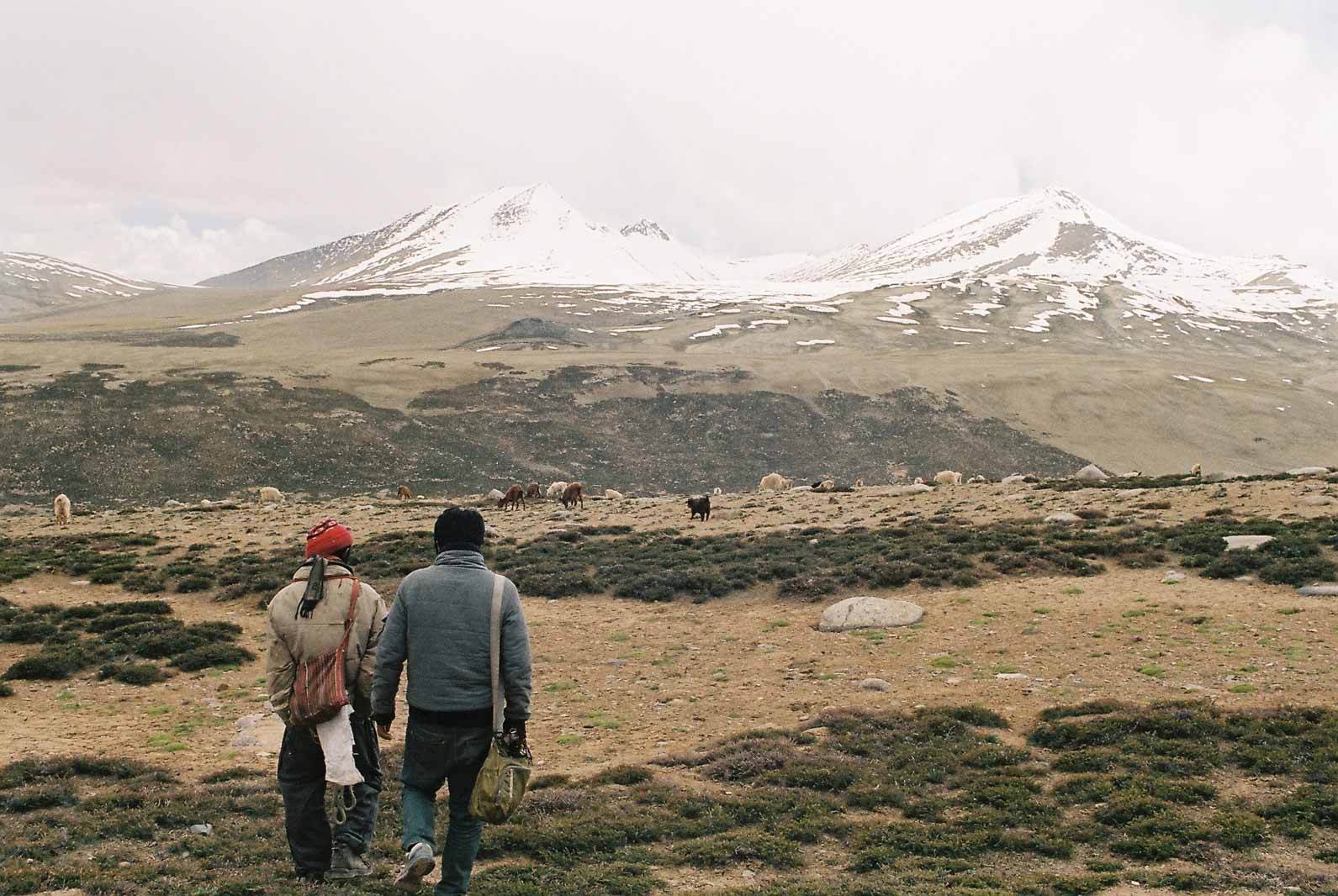Nomads of Kharnak, India
The Changthang Plateau is a remote region in the Indian Himalayas, inhabited by a nomadic community called Kharnak. The nomads live from their livestock – yaks, sheep and goats – and move up to 10 times a year to bring their animals to grazing land. Crafts for the Kharnak is about making things which are useful for the nomadic life around animals using their wool. Therefore, the Kharnak people, with a lifestyle closer to Tibetan nomads than settled Ladakhis, have been weaving saddlebags, tents, rugs and fabric for centuries. The weaving practice is divided between the women and the men, depending on raw material and the products – the women are dedicated to spinning and weaving sheep and yak wool, making fabric, bags and rugs, and the men spin, weave and braid yak hair creating ropes and tents.
In the last 20 years, due to climate change and modernisation, about 70% of the Kharnak community has settled in Kharnakling, close to the capital city Leh, located around 5 hours from the Kharnak region. By this drastic change of lifestyle, most of the artefacts such as saddlebags, tents and shepherd’s bags are no longer needed. As a consequence, the old way of living and the craft is not considered by the young people anymore because it seems ancient to them and not something they should or need to learn. We are KAL is a social enterprise that works with the two communities, the settled nomads in Kharnakling and the nomads of Kharnak, with the hope to trigger a small change and encourage the weaving techniques and artefacts which epitomize the nomadic way of life. View the full article on we are KAL.












